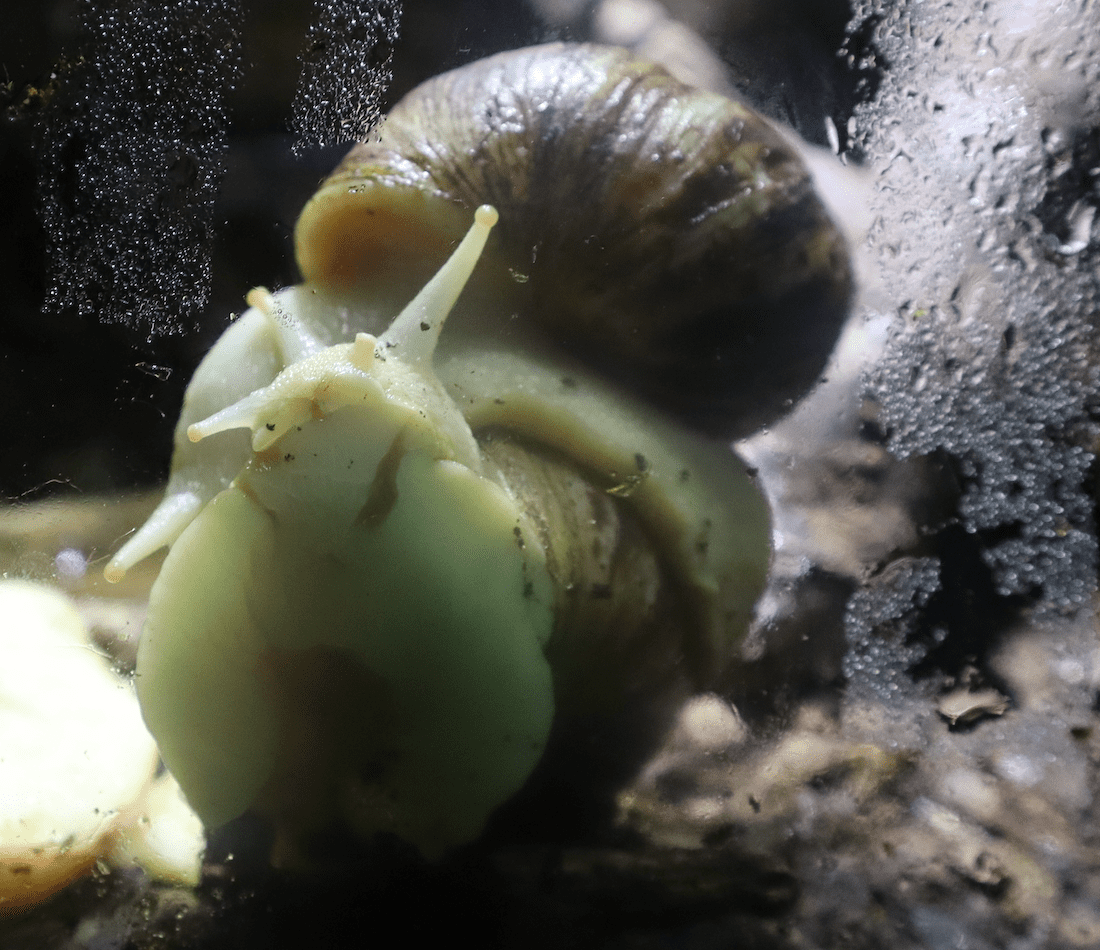
Meet the giant African land snail, as impressive as it is problematic.
When most Deep Sea World visitors catch a glimpse of the African land snail (Lissachatina fulica), “wow” is the first word they utter. After all, they’re not called “giants” for nothing.
Spot one of these in the wild, however, and they’re likely to induce a different reaction. Considered one of the most invasive species of land snails on the planet, Lissachatina fulica are known to cause severe damage to agricultural crops and native plants, meaning their numbers must be closely monitored outside their native range.
Still, we’re not here to ostracise these mighty gastropods. It’s only through greater education and awareness of such species that we can learn to live alongside them. With that in mind, here’s what you need to know about the African land snail.
Where are African land snails found?
As their name suggests, African land snails are native to Africa, particularly East African countries like Kenya, Tanzania, and Mozambique. However, they’ve since spread to every continent on Earth barring Antarctica, mainly through accidental introduction and the exotic pet trade.
The success of African land snails is all down to their ability to adapt to different types of mild climates. Provided the temperature isn’t too cold, these snails can survive virtually anywhere, which is part of the reason they’re considered so invasive.
What do African land snails look like?
Picture a snail you find might in your garden and then multiply it by ten – that’s about the size of an African land snail. These slow-moving giants are truly formidable, with some animals growing over 20cm in length. They’re heavy too, with some of the largest thought to weigh upwards of 250g – eight times more than the common garden snail (Cornu aspersum).
Aside from their immense size, another thing that sets the giant African land snail apart is its long, conical shell. Banded brown in colour, these dextral cones are twice as long as they are wide, making the Lissachatina fulica even more impressive to behold.
What do African land snails eat?
In a word: everything. African land snails certainly aren’t fussy eaters, chowing down on everything from plants, fruits, vegetables and fungi to cardboard, paper and bone matter. They’ve even been known to snack on stones, gravel and concrete, from which they process calcium to maintain healthy shells. Incredible!
It’s worth pointing out, too, that these big snails have lots of predators in the wild, which is good news for controlling their numbers in parts of the world where they really shouldn’t be. Everything from foxes and rats to boars, crabs and fire ants are thought to dine on African land snails, particularly when they’re still young.
Did you know? African land snails are hermaphrodites, meaning they have both male and female sexual organs. They can’t, however, self-fertilise, so must find a suitable mate to reproduce. They can produce between 100-500 eggs every couple of months.
Type
Invertebrates
What do they eat?
More than 500 types of plants
Size
The shell reaches up to 7.8 inches in length and 3.9 inches in height
Water Type
Land
Where are we?
Native to Africa, however, they are now found on all continents except Antarctica
